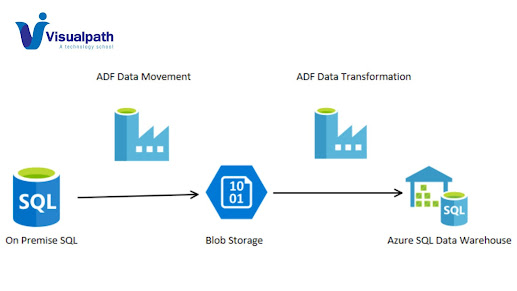File Incremental Loads in ADF : Azure Data Engineering
Azure Data Factory (ADF) is a cloud-based data integration service that allows you to create, schedule, and manage data pipelines. Incremental loading is a common scenario in data integration, where you only process and load the new or changed data since the last execution, instead of processing the entire dataset. - Microsoft Azure Online Data Engineering Training
Below
are the general steps to implement incremental loads in Azure Data Factory:
1. Source and Destination Setup: Ensure that your source and destination datasets
are appropriately configured in your data factory. For incremental loads, you
typically need a way to identify the new or changed data in the source. This
might involve having a last modified timestamp or some kind of indicator for
new records.
2. Staging Tables or Files: Create staging
tables or files in your destination datastore to temporarily store the incoming
data. These staging tables can be used to store the new or changed data before
it is merged into the final destination. - Azure
Data Engineering Online Training
3. Data Copy Activity:
Use the "Copy Data" activity in your pipeline to copy data
from the source to the staging area. Configure the copy activity to use the
appropriate source and destination datasets.
4. Data Transformation (Optional): If you need to perform any data transformations,
you can include a data transformation activity in your pipeline.
5. Merge or Upsert Operation: Use a database-specific operation (e.g., Merge
statement in SQL Server, upsert operation in Azure Synapse Analytics) to merge
the data from the staging area into the final destination. Ensure that you only
insert or update records that are new or changed since the last execution.
6. Logging and Tracking: Implement logging and tracking mechanisms to keep
a record of when the incremental load was last executed and what data was
processed. This information can be useful for troubleshooting and monitoring
the data integration process. - Data
Engineering Training Hyderabad
7. Scheduling: Schedule
your pipeline to run at regular intervals based on your business requirements.
Consider factors such as data volume, processing time, and business SLAs when
determining the schedule.
8. Error Handling:
Implement error handling mechanisms to capture and handle any errors
that might occur during the pipeline execution. This could include retry
policies, notifications, or logging detailed error information.
9. Testing: Thoroughly
test your incremental load pipeline with various scenarios, including new
records, updated records, and potential edge cases.
Remember that the specific implementation details may vary
based on your source and destination systems. If you're using a database, understanding
the capabilities of your database platform can help optimize the incremental
load process. - Azure
Data Engineering Training
Visualpath is
the Leading and Best Institute for learning Azure Data Engineering Training. We provide Azure Databricks Training, you will get the best course at an affordable
cost.
Attend Free
Demo Call on - +91-9989971070.
Visit Our Blog: https://azuredatabricksonlinetraining.blogspot.com/
Visit: https://www.visualpath.in/azure-data-engineering-with-databricks-and-powerbi-training.html

.jpg)


Comments
Post a Comment